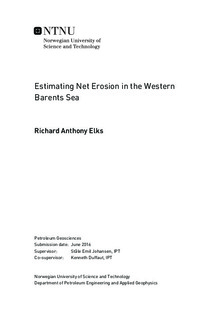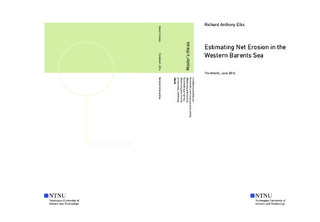| dc.description.abstract | Quantification of uplift and erosion in the western Barents Sea has been a relevant and challenging problem for geoscientists for several decades. Uplift and erosion processes have implications for petroleum prospectivity, such as effects on source rock maturation, reservoir properties and migration of hydrocarbons. Thus, demand for new data and interpretation techniques is ongoing. Net erosion has been estimated in previous studies using various techniques such as vitrinite reflectance, opal A opal CT, seismic shot gathers and sonic logs. The purpose of this project is to estimate net erosion in the western Barents Sea using sonic logs, compare these results with seismic data and interpret the mechanisms causing both local and regional uplift and erosion in various parts of the western Barents Sea.
11 wells from the western Barents Sea have been used to estimate net erosion in various areas. In an attempt to increase reliability and comparability to a reference trend, sonic logs have been filtered to process only shale lithologies in the Kolmule formation. Several wells in the western part of the study area produced net erosion estimates of approximately 1000 1500 m, with some areas in the north and north east estimated to have been eroded approximately 1500 2000 m. The higher estimates are less reliable, with uncertainties ranging from ± 500 800 m. More reliable estimates were calculated in the west and south west, with uncertainties ranging from ± 150 300 m. Greater uncertainties are attributed to poor gamma ray and sonic logs, short Kolmule intervals, sparse data and/or variations in thermal histories that have not been accounted for.
The western Barents Sea has been divided into several structural provinces for interpretation using net erosion estimates and seismic data. Net erosion estimates from sonic logs were found to correlate well with seismic data. Where velocity data has been poor or absent in structural provinces, a combination of seismic data and previous studies have been used to estimate net erosion.
The results herein suggest the occurrence of one or more significant regional Cenozoic uplift and erosion events in the western Barents Sea, which agrees with several previous studies. The cause of this erosion is attributed to several phases of tectonic uplift during Cenozoic time, followed by severe glacial erosion and isostatic rebound. | en |

